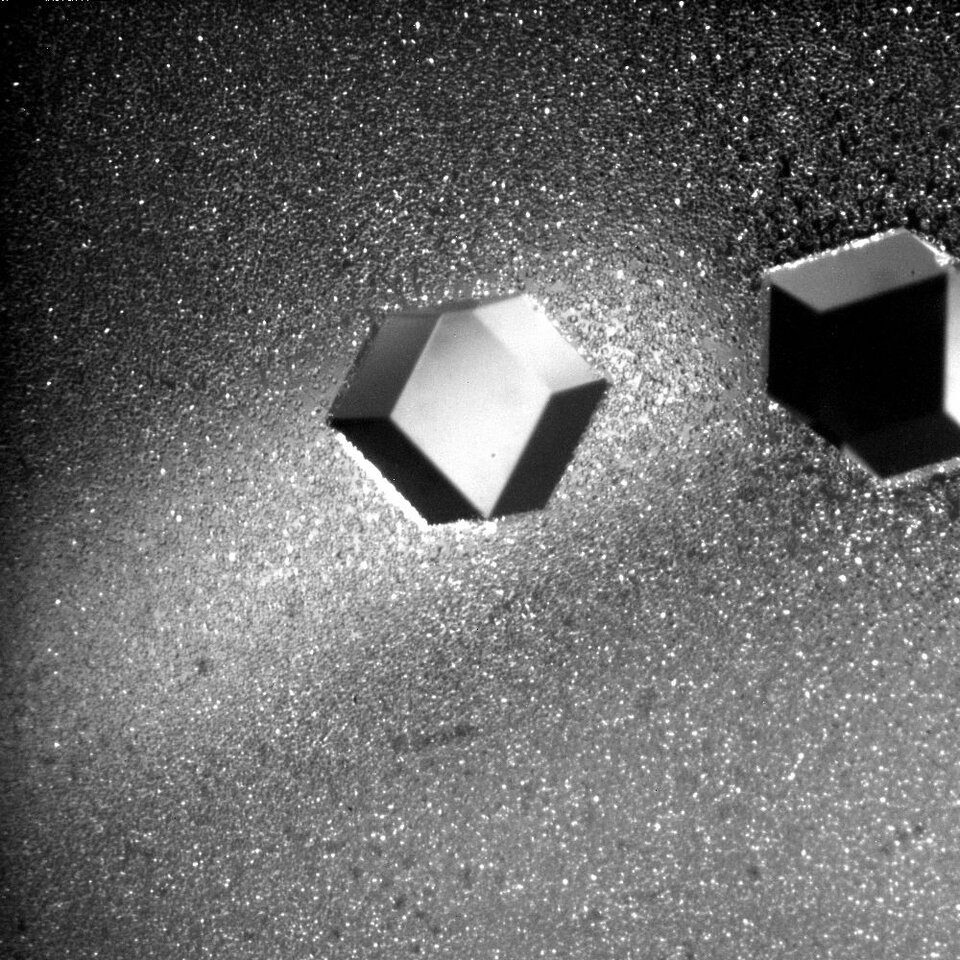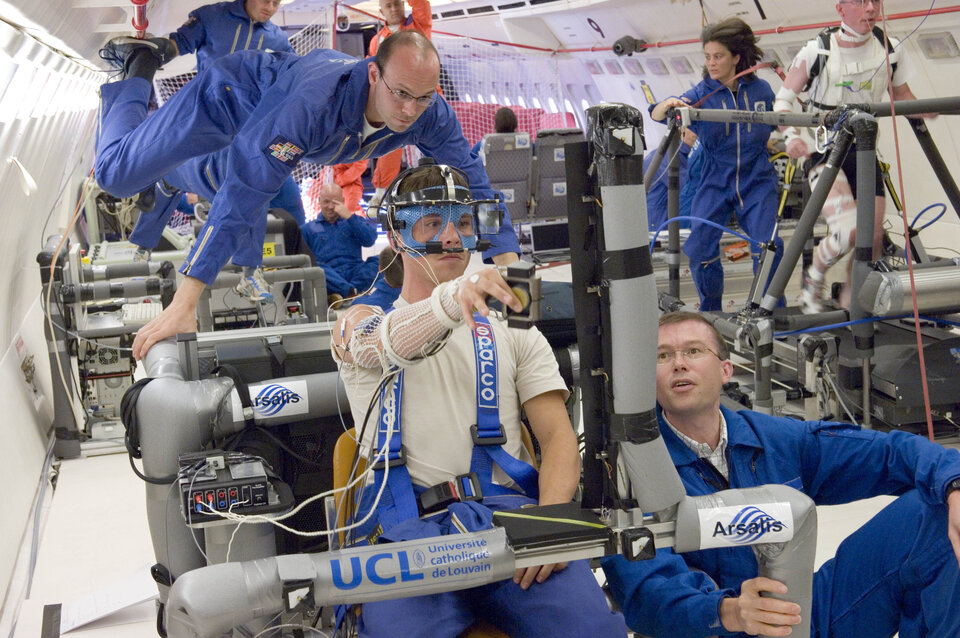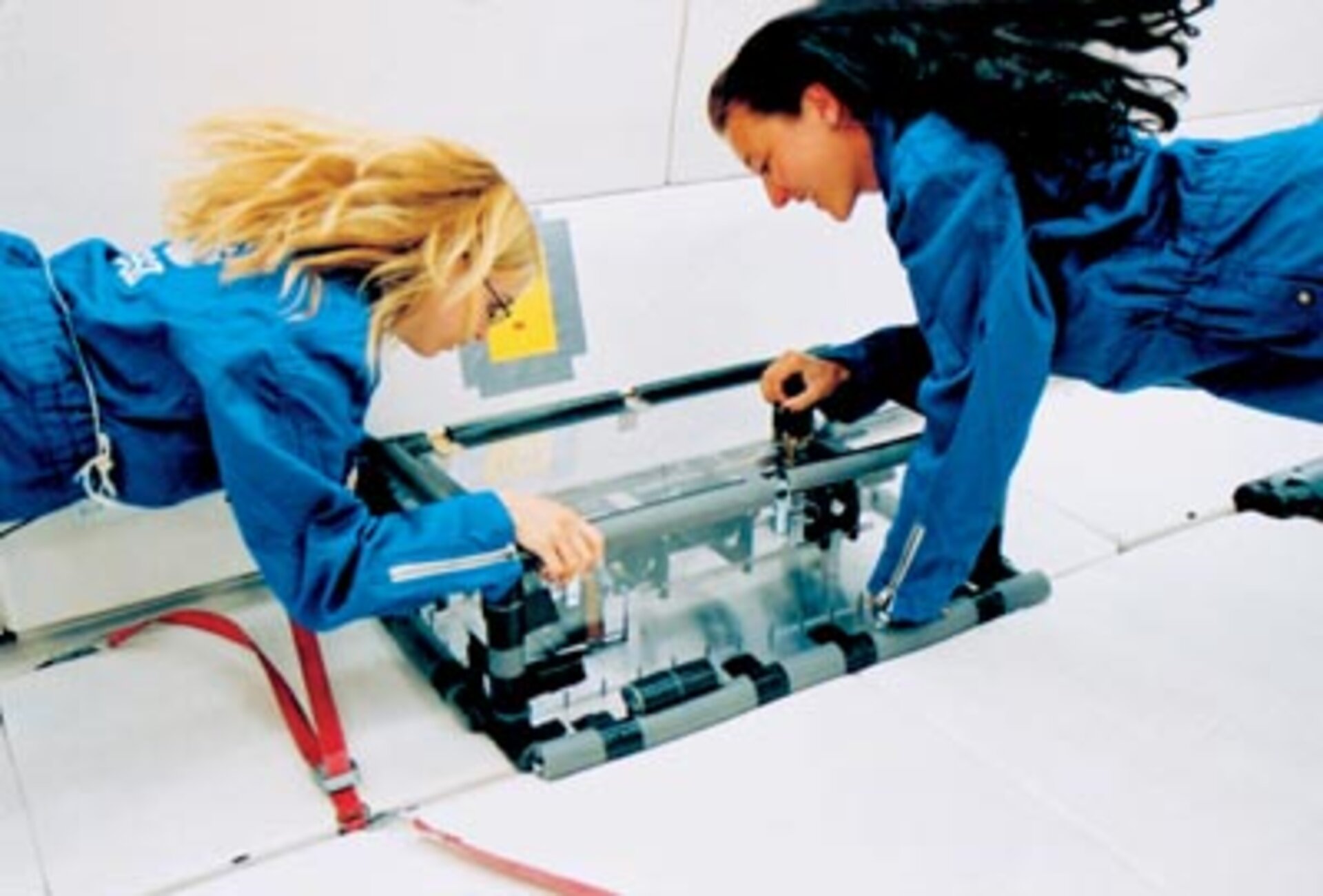Highlights of the airborne zero gravity research
The parabolic flight symposium provided an overview of what has been achieved on the European parabolic flights over the 25 years.
Some of the most interesting results and questions are:
How were the Earth and other planets born some 4.6 billion years ago?

Taking advantage of microgravity conditions to investigate how tiny dust and ice grains behave, we can better understand the conditions in the primordial Solar System; how the interplanetary dust and gas around the young Sun came together and finally formed the Solar System we see today.
Strong and light metallic foams

The behaviour of dust, ice, gas and crystals, vibrations, and heat and mass transfer are some of the most interesting topics of physical science that can be best studied in weightlessness. One experiment involved Xray studies of metallic foam, created by melting various metals and blowing gas through them. These novel materials are light but still structurally very stable.
Better semiconductors? New drugs? Diamonds?

Another experiment, already conducted on the International Space Station, has provided insight into complex plasmas, condensed matter (crystallisation) and fluid dynamics. Further applications might be in semiconductor production, medicine development, astrophysics and even fusion energy. In one experiment, involving high-energy plasma beams, some miniature diamonds were created as a byproduct.
How do we perceive depth and height?

The human physiological response to microgravity is still a big question. The cardiovascular system and the way we observe and sense the world around us are affected by gravity. Parabolic flights are a superb platform for these studies, perhaps leading to new kinds of treatments, such as prostheses.
Better immunity? Stronger plants?

It is well known that the immune system is less reactive under microgravity conditions; biological researchers are therefore looking into immune cells on the molecular level and trying to understand how they react to microgravity. Biologists have also studied muscle atrophy and the gravity-signalling chain in the roots of plants.
A comprehensive list of experiments performed during ESA’s parabolic flight campaigns can be found at: http://eea.spaceflight.esa.int




